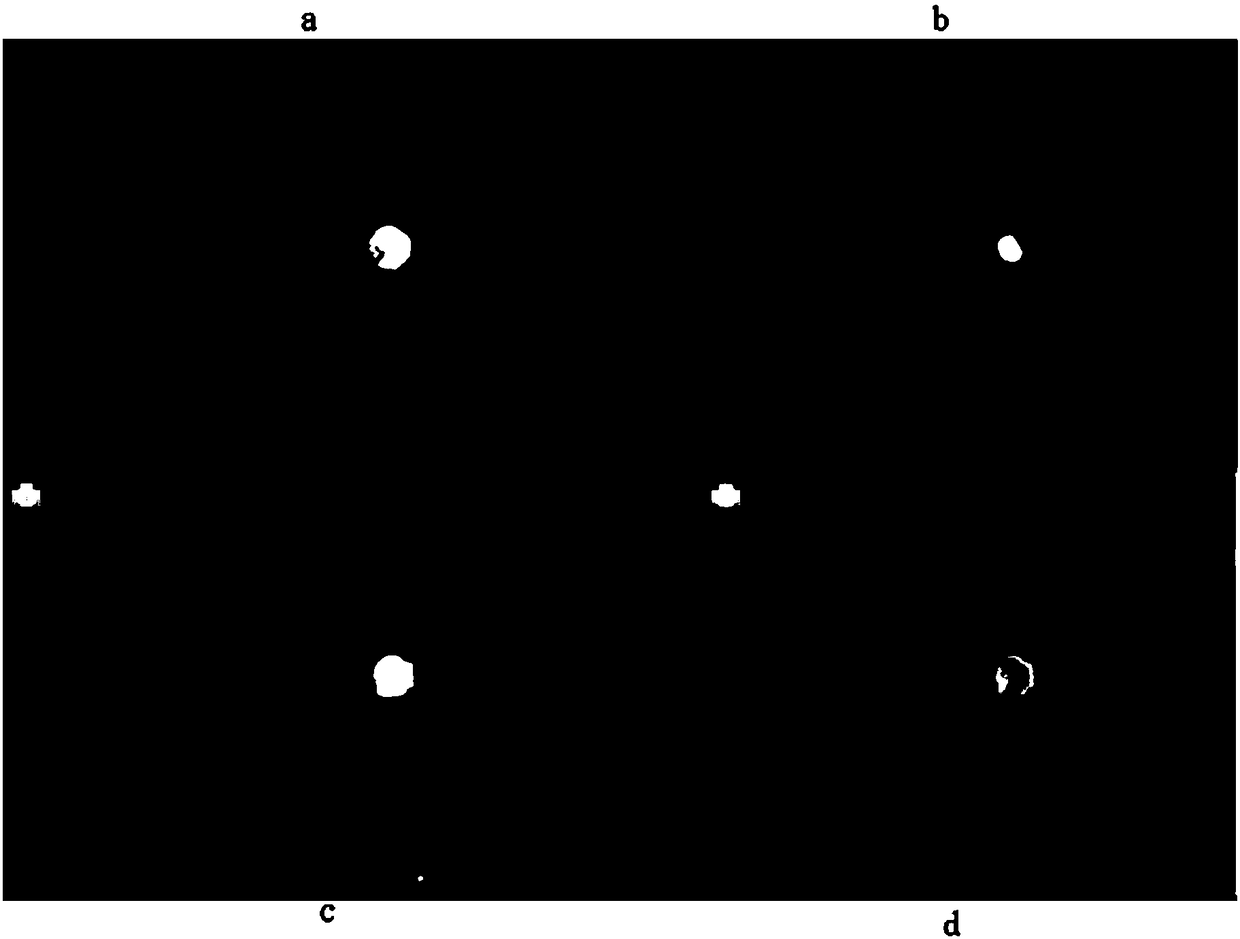Detecting method for circulating tumor cell surface marker molecule PD-L1
A PD-L1 and tumor cell technology, applied in the field of molecular biology, can solve the problems of patient injury, PD-L1 confusion, inconsistent staining technology and conditions, and achieve the effect of simple detection method, high sensitivity and good specificity
- Summary
- Abstract
- Description
- Claims
- Application Information
AI Technical Summary
Problems solved by technology
Method used
Image
Examples
Embodiment 1
[0022] figure 1 It is a schematic diagram for detecting the positive expression of PD-L1 in circulating tumor cells. figure 1 a is the blue fluorescent channel, use DAPI to mark the nucleus, if the blue color is DAPI+, it means it is a complete cell, if it does not show blue color, it is DAPI-, it is not a complete cell; figure 1 b is the green fluorescent channel, marked with PD-L1 protein, if it is green, it is PD-L1+, and if it is not green, it is PD-L1-; figure 1 c is the red fluorescent channel, marking CK protein, CK+ when it is red, and CK- when it is not. figure 1 d is the synthesis of the three channels.
[0023] This example is an example of detecting the expression of PD-L1 on the surface of circulating tumor cells in clinical liver cancer samples, which specifically includes the following steps:
[0024] 1) Whole blood processing:
[0025] a. Add 200 μL of 1× red blood cell lysate to 2 mL of whole blood, place at room temperature for 15 min, and shake evenly du...
PUM
 Login to View More
Login to View More Abstract
Description
Claims
Application Information
 Login to View More
Login to View More - R&D
- Intellectual Property
- Life Sciences
- Materials
- Tech Scout
- Unparalleled Data Quality
- Higher Quality Content
- 60% Fewer Hallucinations
Browse by: Latest US Patents, China's latest patents, Technical Efficacy Thesaurus, Application Domain, Technology Topic, Popular Technical Reports.
© 2025 PatSnap. All rights reserved.Legal|Privacy policy|Modern Slavery Act Transparency Statement|Sitemap|About US| Contact US: help@patsnap.com

